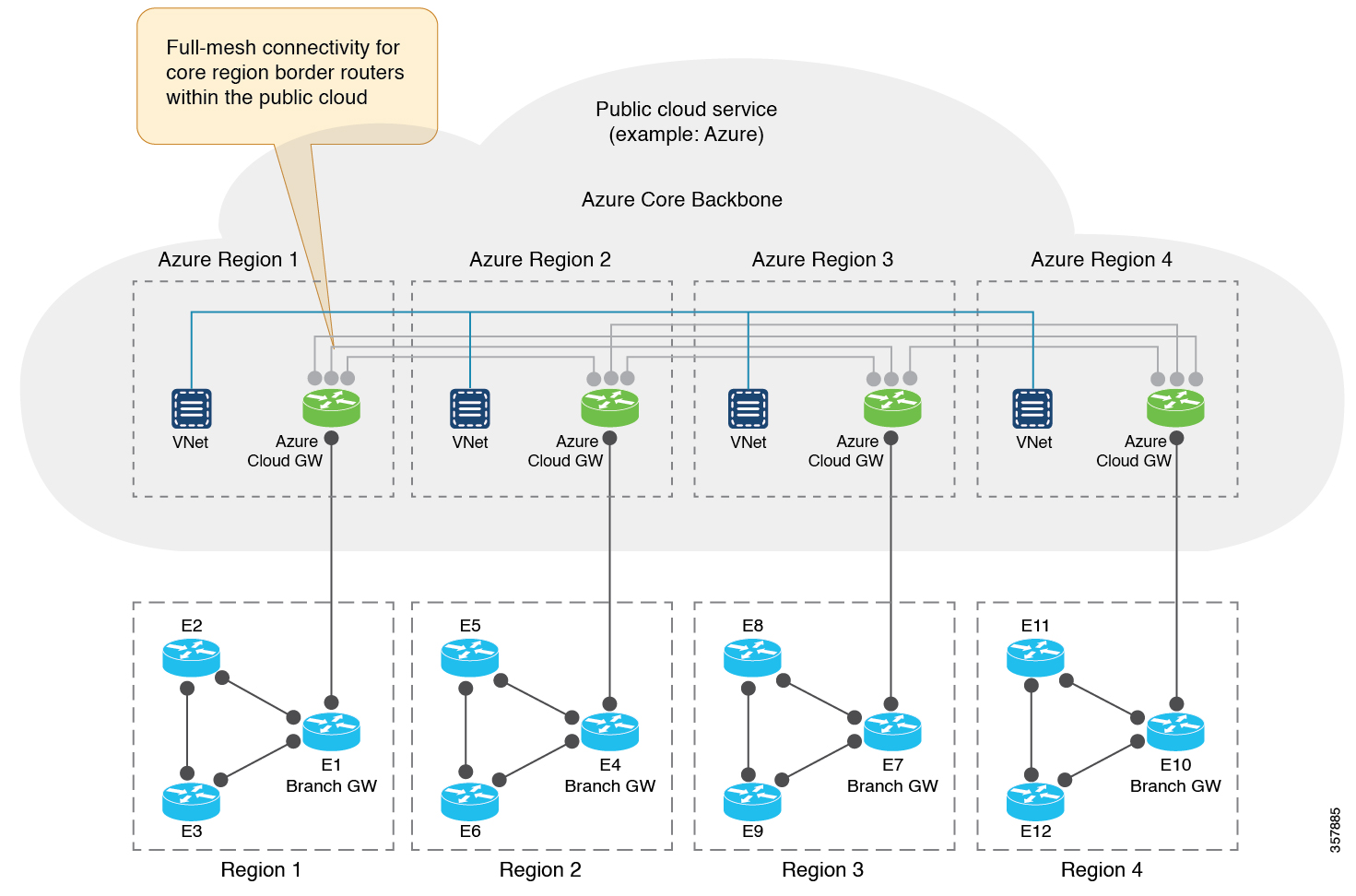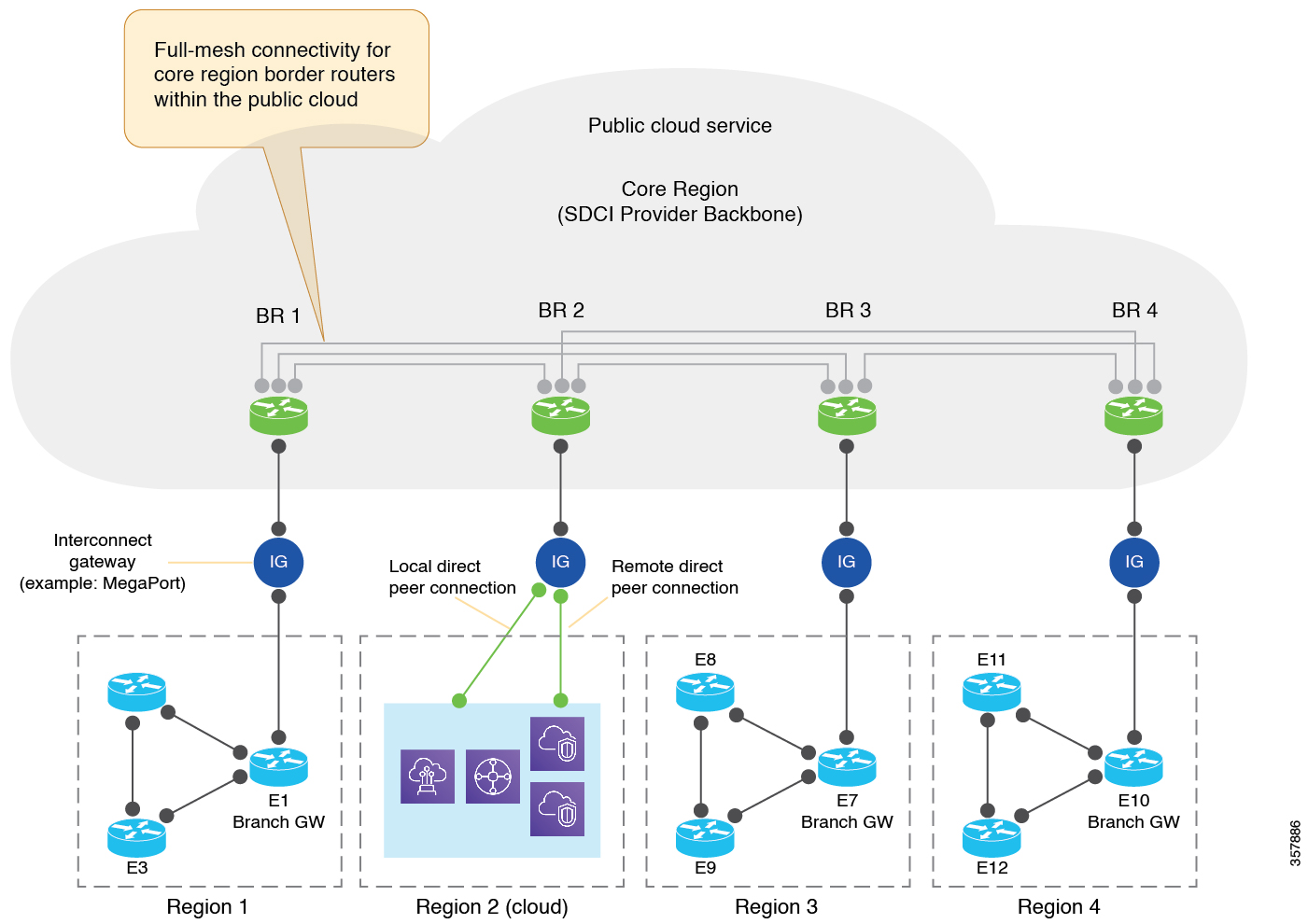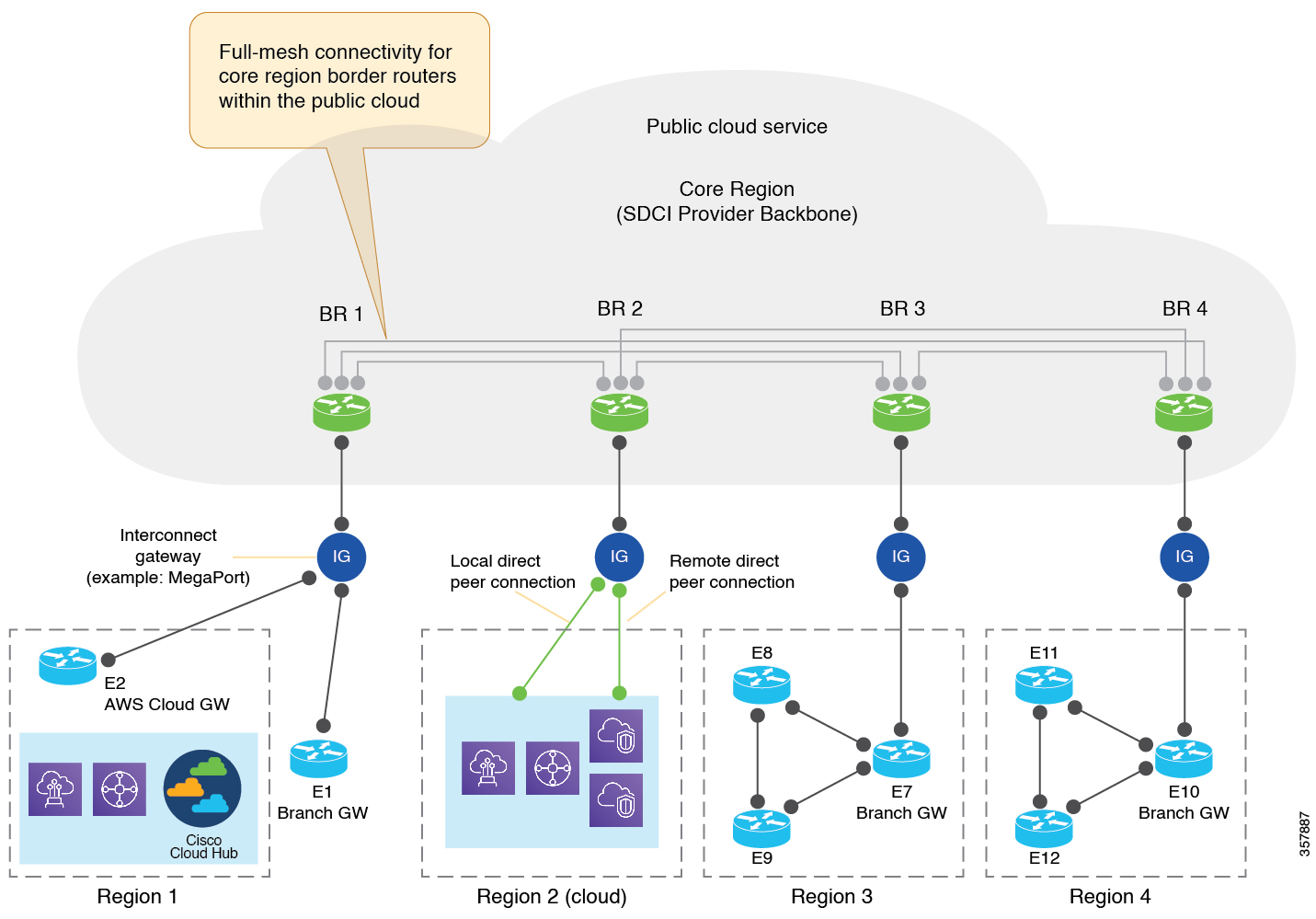Multi-Region Fabric Using Multicloud and SDCI
|
Feature Name |
Release Information |
Description |
|---|---|---|
|
Multi-Region Fabric Using Multicloud and SDCI |
Cisco IOS XE Catalyst SD-WAN Release 17.10.1a Cisco vManage Release 20.10.1 |
This feature enables you to configure a cloud backbone or a Software-Defined Cloud Interconnect (SDCI) provider backbone as core region (region 0), and cloud gateways or interconnect gateways as border routers. You can thus easily establish site-to-site connectivity in multiple cloud regions and cloud networks. |




 Feedback
Feedback